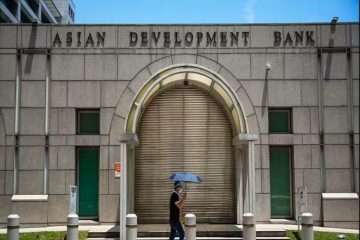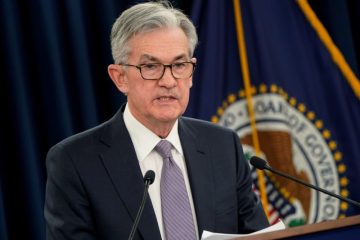Profits are soaring and supporting the economy

Job growth experienced a decline in April, as indicated in the employment numbers released on Friday. However, there is a significant distinction between a slightly weaker labor report and the kind of job losses that have the potential to trigger an economic recession.
Given the positive trajectory of corporate profits, it seems unlikely that a significant economic downturn is imminent.
Most U.S. companies have now released their first-quarter results, revealing an uptick in profit growth. According to FactSet, earnings per share for companies in the S&P 500 are projected to increase by 5.2% compared to the previous year. This surpasses the 3.4% growth that analysts had predicted at the end of March, and represents the most robust growth in almost two years.
It is quite common for company results to surpass the estimates. In a rather atypical fashion, analysts also dedicated the previous month to revising their estimates for the current quarter. Analysts anticipate a 9.8% increase in second-quarter earnings per share, up from the previous estimate of 9% in March. According to FactSet earnings analyst John Butters, analysts haven’t raised earnings estimates during the first month of a quarter since the fourth quarter of 2021.
Corporate profits play a crucial role in indicating the overall health of the U.S. economy, highlighting its steady performance. Although certain economic indicators, like consumer-sentiment readings, have been negative and inflation has increased, a robust U.S. profit performance generally indicates ongoing expansion.
It’s possible that the increase in earnings estimates is due to companies being optimistic themselves, rather than trying to dampen analysts’ optimism and lower estimates. Only 100 transcripts of earnings calls, investor events, and conferences recorded in the first quarter mentioned the term “recession” among companies in the S&P 500, as reported by FactSet. The number decreased from 302 in the first quarter of 2023, marking the lowest figure in two years.
Survey-based indicators of corporate sentiment have shown improvement. The Business Roundtable’s index of chief executive officers’ economic outlook reached its highest level in the first quarter since the second quarter of 2022. CEO hiring and capital spending expectations have seen an increase in recent times. A survey conducted by Duke University’s Fuqua School of Business in collaboration with the Federal Reserve banks of Atlanta and Richmond revealed a notable rise in optimism among chief financial officers.
“If profits are good, there is no reason to retrench,” stated John Graham, the Duke economist who oversees the CFO survey. In addition, numerous CFOs report that their companies continue to face challenges in attracting workers.
Currently, Graham believes that companies are inclined to hire more workers when the profit outlook is positive, and maintain their workforce if the outlook becomes uncertain, rather than laying off the employees they worked hard to recruit. Even if earnings decline, companies may be hesitant to resort to layoffs.
It is worth noting that despite notable layoff announcements from companies such as Tesla and Amazon.com, the overall level of layoff activity remains relatively low. In March, the Labor Department released data indicating that approximately 1.526 million workers were laid off from their jobs, after making seasonal adjustments. That was the lowest number since December 2022. During the year 2019, which was a favorable period for the job market, the average monthly layoff count stood at 1.818 million. The number of initial claims for unemployment insurance, which is considered a reliable indicator of layoff activity, has continued to stay at a low level.
The economy does not operate as a perpetual-motion machine, where profit growth automatically translates into employment growth, which then fuels consumer spending growth, ultimately leading to further profit growth in an endless virtuous cycle. With the aim of curbing inflation, the Federal Reserve has significantly increased interest rates. However, there is a lingering concern that these rate hikes could potentially lead to an economic downturn. Historical evidence demonstrates that the economy has the potential to swiftly transition from a state of prosperity to one of decline.
However, individuals have continued to engage in shopping activities, as consumer spending experienced a growth rate of 2.5% per year, adjusted for inflation, during the first quarter, as reported by the Commerce Department. Wage gains have slowed down compared to the previous year, but they have still managed to stay ahead of inflation since last May. This has given workers the ability to spend their earnings. Productivity gains have enabled businesses to sustain profit margins even with wage increases.
When profits begin to decline, it may be a prudent moment to express concern regarding employment. However, they are not showing signs of faltering at the moment.







